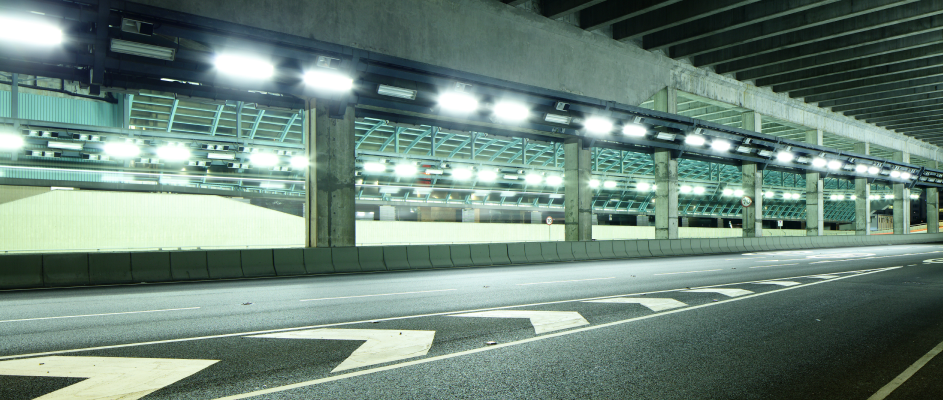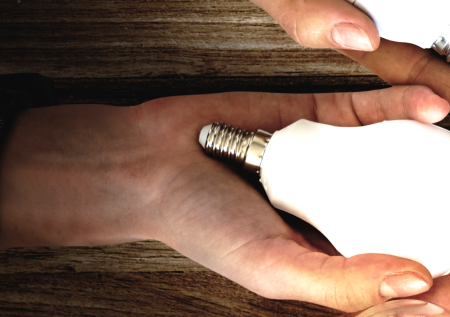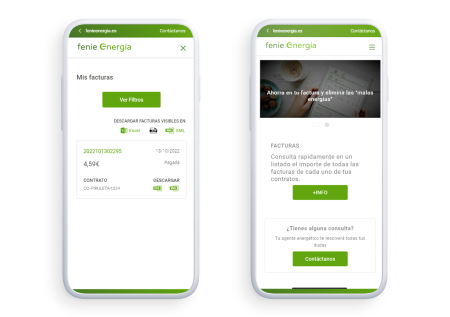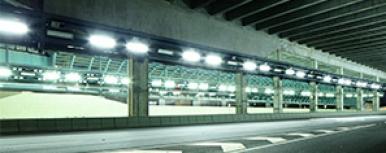Energy efficiency means savings on your bill
Find out the available options and contact our Energy Agents if you need advice.

Take a chance on by switching to LED technology
Do you want to know more about energy saving and efficiency?
What is reactive power?
Numerous pieces of electrical equipment such as fluorescent lighting, electric motors, air-conditioning machines, lifts, etc., produce a flow of energy that circulates from one side of the electrical network to the other, causing losses and problems in the distribution network. This energy is called "reactive energy".
The energy distribution companies have to invest more in oversizing distribution lines as well as transformers for the transport and transformation of this reactive energy. This generates costs in the electricity system that are passed on to the customer in the form of a reactive energy penalty on their electricity bill.
What is the typical lifetime of a capacitor bank?
The life of a capacitor bank is a parameter that must be estimated by means of indirect tests and trials, but it is generally estimated that the average life of a capacitor bank is 10 to 12 years as long as a minimum maintenance is carried out to guarantee the good operation of the bank in accordance with the IEC 60831 standard which establishes all the functional requirements of the bank.
What is the difference between buying a capacitor bank on the market and Feníe Energía's service?
Feníe Energía studies each case on a personalised basis. Through our network of Energy Agents, and only if it is profitable for you, we will advise you to install a capacitor bank to remove the penalty from your bill, or at least reduce it considerably.
So that you can save money from day one without having to make any investment, we offer you the option of paying for the battery in 24 instalments within the same electricity bill (the concept of excess reactive energy that you currently pay will be replaced by lower instalments). After 24 months you will not pay any excess or fees.
On the other hand, and for your peace of mind, if you have an electricity contract and install a battery with Feníe Energía, we will monitor your bill on a monthly basis to check that the penalty for reactive energy does not reappear. In the event that it appears again, we will immediately notify your Energy Agent so that they can visit the installation and check what may have happened (tripping of switches, new equipment installed, a fault, etc.). Without this control, some customers take months to realise that their capacitor bank has been disconnected.
What do I need to consider when changing my lighting?
Whenever you are satisfied with the quality and intensity of your current lighting, Feníe Energía's advice is to try to replace it with products with similar lighting characteristics. The technical characteristics to be taken into account are explained below.
- Lumens: is the amount of light emitted by a light source. It should be borne in mind that in many cases the lumens needed in LED equipment are lower than those of conventional lamps. These emit light in all directions, which means that some of it is wasted, whereas LED devices emit their light directly onto the working plane (fluorescent tubes are a clear example).
- Colour Rendering Index (CRI): this parameter indicates how well colours will be distinguished. With a CRI of 100 you will see all colours and with a CRI of 0 only greyscales.
- Temperature: is the colour or warmth of the light. As an example, incandescent bulbs are typically 2700K giving a yellow/orange colour and fluorescent bulbs in an office 4,000K giving a white light.
- Angle: the angle at which the light is emitted from the luminaire. In a corridor with halogens it is usually 35-60º so that the light is reflected on the floor and in an office with fluorescents it is usually 120º to obtain uniform illumination without over-lit areas.
How have LEDs evolved in recent years?
The LED market has matured and has successfully overcome the drawbacks associated with those early devices of a few years ago, such as flickering or short lifetime. Today, all internationally renowned lighting manufacturers already offer a wide range of LED products at very competitive prices.
How will I know if my installation is not producing as much energy as it should?
By keeping track of the generation of your installation, it is now possible to monitor special regime plants by means of telemetry or, if you wish to see in real time, by installing network analysers.
Once monitored, the software allows you to create alarms or alerts where you will be warned if the desired production is not reached.
Can I log in to view my reports from any device (computer, mobile, tablet)?
Yes, the reports, as well as being sent to the e-mails programmed in the software, will be stored in a tree format in the Sigue+e monitoring software, which means that the client will always have access to them.
Can I integrate my accountant in the Sigue+e platform?
Yes, whether you have a remote management meter where the information travels via a power line (for power ratings below 15 kW), or a remote metering meter (power ratings above 15 kW) where the information is extracted from the meter with a call to the meter's router, it is possible to monitor these meters.
In addition, if you want to see this consumption in real time on a minute-by-minute basis, you can install different measurement equipment in the meter, whether optical readers, consumption monitors or network analysers).
How much will I save by monitoring consumption?
By monitoring the service connection alone, the average saving is 10% of the total consumption.
By sub-meetering (monitoring downstream supply and independent downstream circuits), the average savings are between 12% -15%.
It is important to mention that metering alone does not generate savings, but it provides the ability to visualise what is happening and allows us to safely undertake cost-saving measures that lead to direct financial savings.
You may also like

¿Sabes qué tipos de bombillas hay en el mercado? Elige la más adecuada para cada uso y ahorra de manera de eficiente

Etiquetas de eficiencia energética: así son las nuevas etiquetas de los electrodomésticos

Feníe Energía en tu bolsillo



